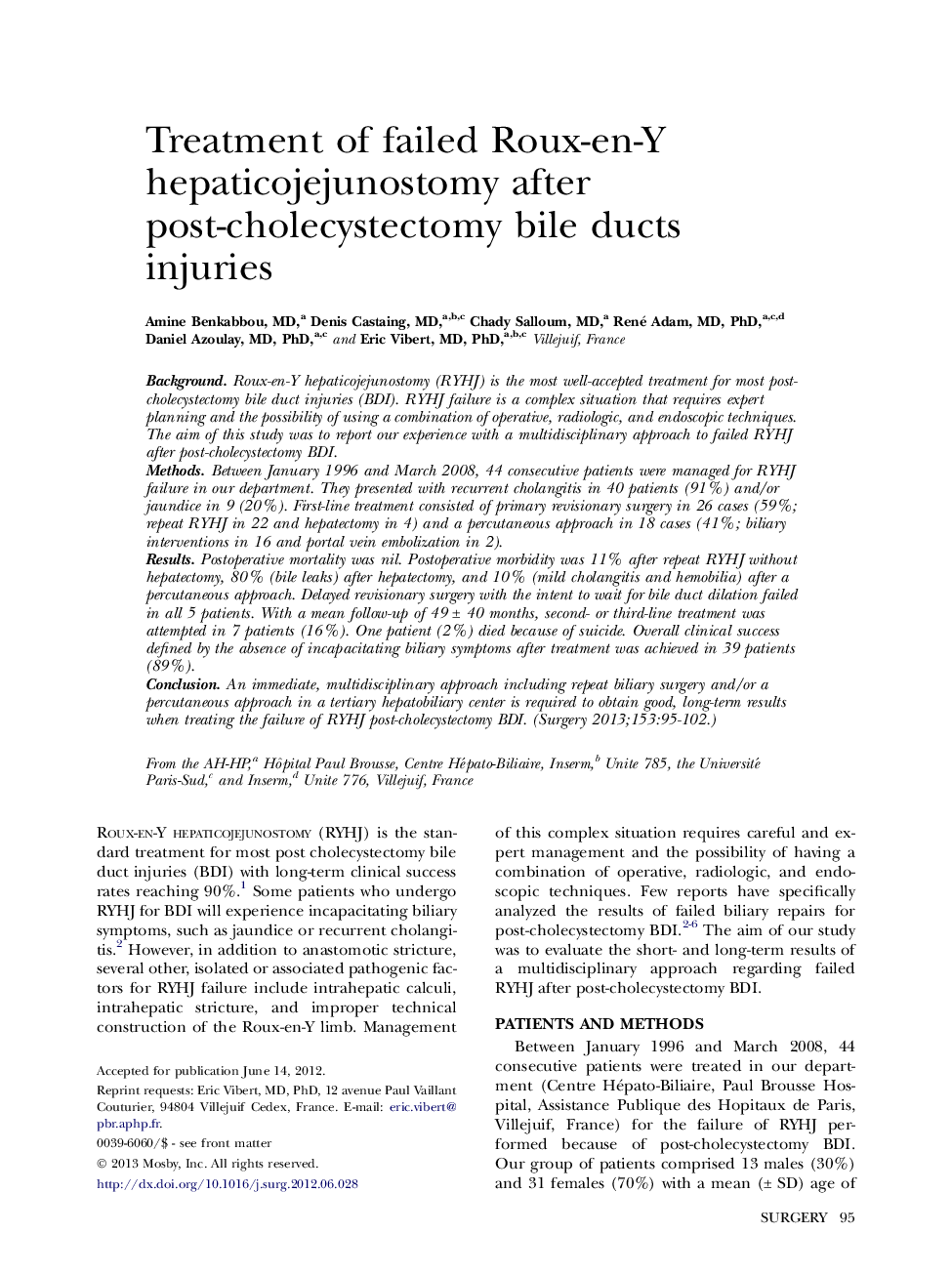| Article ID | Journal | Published Year | Pages | File Type |
|---|---|---|---|---|
| 4307693 | Surgery | 2013 | 8 Pages |
BackgroundRoux-en-Y hepaticojejunostomy (RYHJ) is the most well-accepted treatment for most post-cholecystectomy bile duct injuries (BDI). RYHJ failure is a complex situation that requires expert planning and the possibility of using a combination of operative, radiologic, and endoscopic techniques. The aim of this study was to report our experience with a multidisciplinary approach to failed RYHJ after post-cholecystectomy BDI.MethodsBetween January 1996 and March 2008, 44 consecutive patients were managed for RYHJ failure in our department. They presented with recurrent cholangitis in 40 patients (91%) and/or jaundice in 9 (20%). First-line treatment consisted of primary revisionary surgery in 26 cases (59%; repeat RYHJ in 22 and hepatectomy in 4) and a percutaneous approach in 18 cases (41%; biliary interventions in 16 and portal vein embolization in 2).ResultsPostoperative mortality was nil. Postoperative morbidity was 11% after repeat RYHJ without hepatectomy, 80% (bile leaks) after hepatectomy, and 10% (mild cholangitis and hemobilia) after a percutaneous approach. Delayed revisionary surgery with the intent to wait for bile duct dilation failed in all 5 patients. With a mean follow-up of 49 ± 40 months, second- or third-line treatment was attempted in 7 patients (16%). One patient (2%) died because of suicide. Overall clinical success defined by the absence of incapacitating biliary symptoms after treatment was achieved in 39 patients (89%).ConclusionAn immediate, multidisciplinary approach including repeat biliary surgery and/or a percutaneous approach in a tertiary hepatobiliary center is required to obtain good, long-term results when treating the failure of RYHJ post-cholecystectomy BDI.
